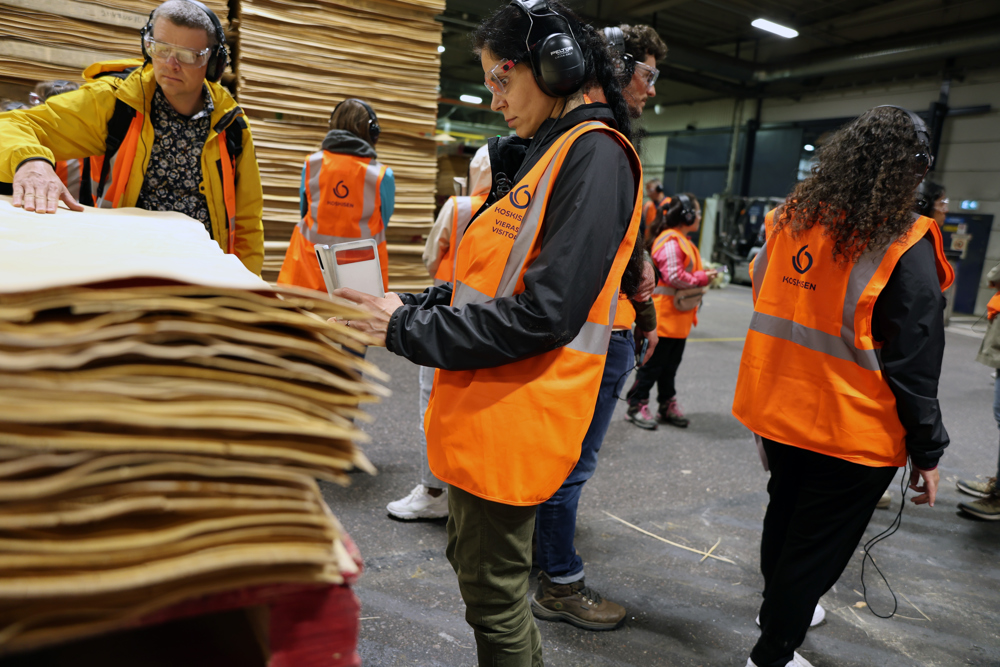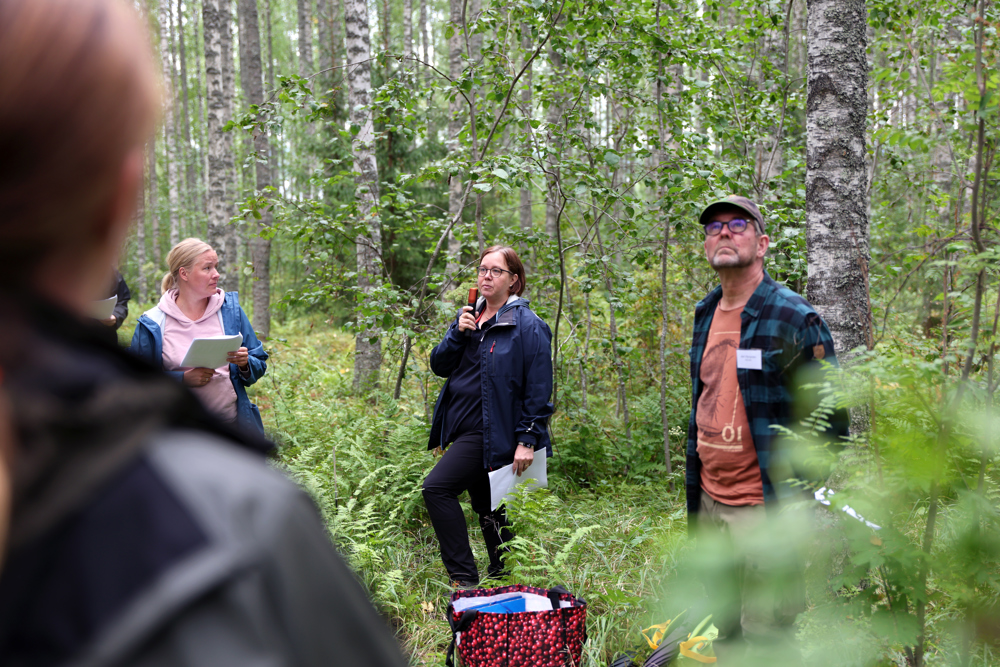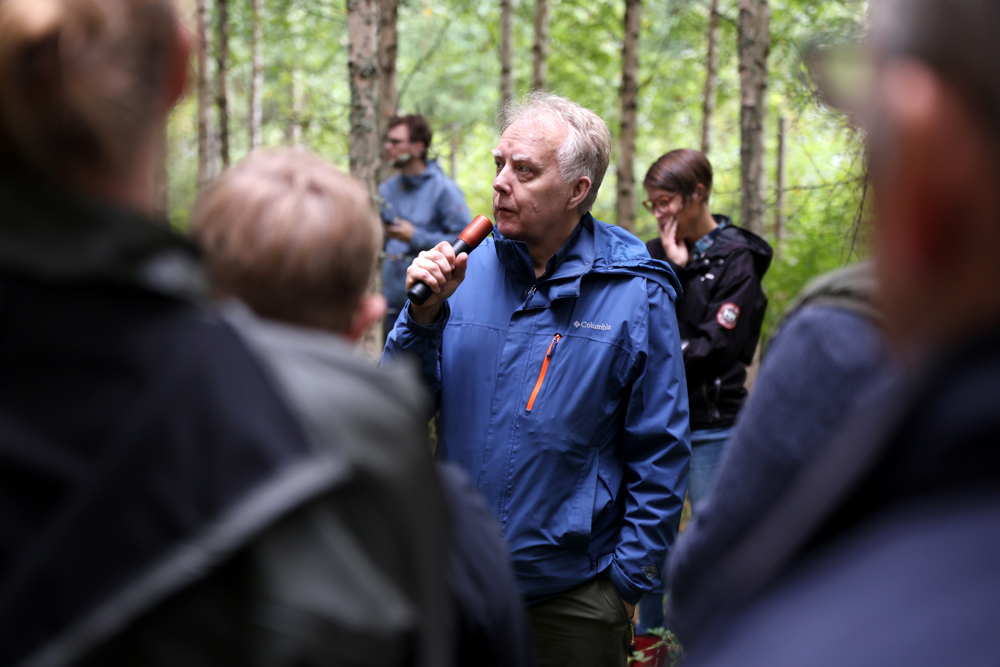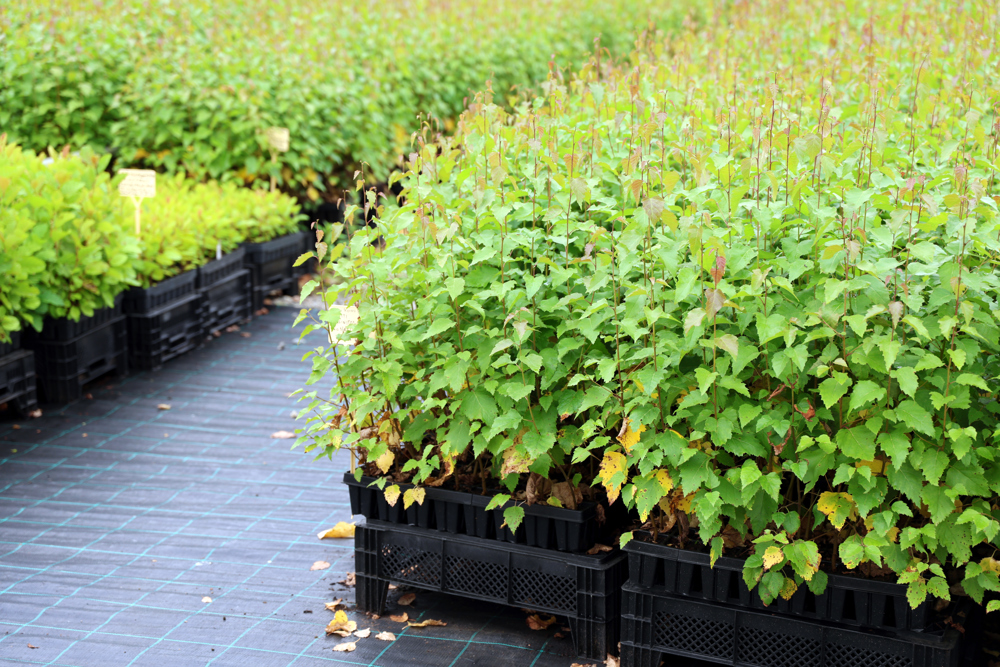The challenges in the development of sustainable and more climate resilient forestry are in many ways similar in the Nordic and Baltic countries. This was concluded when representatives from the countries met in Finland to learn more about the possibilities of breeding and producing more birch.
“The coniferous wood and birch has always been the green gold in Finland”, said Tom-Peter Helenius, director of Koskisen’s panel industry during the study visit at Koskisen Corporation, which among other things produce birch veneer and plywood.
 Study visit at Koskisen Corporation which produces birch plywood. Photo: Stina Johannesson
Study visit at Koskisen Corporation which produces birch plywood. Photo: Stina Johannesson
Like Sweden, pine and spruce have been the dominant tree species in Finland, and still often are when it’s time for planting. A changing climate and other challenges have increased the need to diversify the forest and birch can be a valuable species for the forest industry in Nordic and Baltic countries. There’s also an increased need in many countries for more domestic raw material due to the difficulties in importing wood from abroad, for example due to the Russian invasion of Ukraine.
Birch potential
The potential of using more birch in forestry was the reason for representatives from five Nordic and Baltic countries to meet in Finland for a study visit and to share experiences. The focus of the week-long trip, arranged by Nordic Forest Research (SNS), Trees For Me, the Swedish University of Agricultural Sciences (SLU) and the Natural Resources Institute Finland (Luke), was to increase the knowledge on birch breeding, birch nursery production, and silviculture and management of birch. The broad areas of use of birch wood was demonstrated at Koskisen who presented several implementations currently used in the construction, furniture and design industries.
Silver birch is the national tree of Finland and since the 1970’s the country has invested in more seed production and breeding of birch than in Sweden. But some challenges are similar in the countries, where many forest owners still see birch as a weed, due to previous forestry advising, and a relatively small quantity of birch timber is still produced and processed.
 Saija Huuskonen and Jari Hynynen present impact of thinnings in silver birch stands. Photo: Stina Johannesson
Saija Huuskonen and Jari Hynynen present impact of thinnings in silver birch stands. Photo: Stina Johannesson
Although planting of spruce and pine is still recommended on many sites in Finland new research results can make a difference. Saija Huuskonen, senior scientist at the Natural Resources Institute Finland (Luke), concluded, during one of the week’s many visits at seed orchards and birch experiments, that her results showing a surprising average birch growth of around two metres in height after three seasons, and in more fertile sites up to three metres in height, can justify advocating for more birch forests and mixed forests with birch.
Breeding and management
“Birch will never forgive you.” Saija Huuskonen quoted a colleague referencing that delaying the thinning of birch stands will result in the stand not recovering to produce at its full potential. Pruning is done to some extent in birch stands in Finland, but primarily by engaged, smaller forest owners rather than the companies.
The birch breeding is in many ways ahead in Finland compared to Sweden. Some practical examples are that Finnish greenhouses have figured out the adequate space requirements between the trees and maximizing its requirement for light, for example by laying white gravel on the grounds to increase the reflecting of existing light to nearby trees.
Katri Himanen, senior scientist at Luke, explained that the seedling size has decreased in the past 10 years, which has decreased the price of both the seedlings and plantings, while the use of pelleted seeds has decreased the manual labour in the nurseries. The government invests money in the seed orchards, which secures the access and continuous supply of high-quality reforestation material. Attention has been paid to seed quality, and typically the germination capacity of commercial seed lots is around 80-90%. This is an improvement compared to previous decades.
 Matti Haapanen presents in birch breeding experiment. Photo: Stina Johannesson
Matti Haapanen presents in birch breeding experiment. Photo: Stina Johannesson
But tree breeding is a complex issue and the best growing trees aren’t always producing the most seeds. Matti Haapanen, senior scientist at Luke, compared tree breeding with animal production and related to the challenges with the long life cycles in forestry.
“The problem with trait weighting is that we don’t have the same information as in for example animal production, where they know the full economic value of the mature animal they want to produce. We do not have this information, therefore the characteristics to be refined in trees are quite general and their weights are set more or less subjectively”, said Matti Haapanen.
Challenges ahead
Some of the challenges are similar in the Nordic and Baltic countries. Browsing is a problem in Finland as in Sweden and Latvia. Top dieback is an issue in both naturally regenerated and planted birch and it’s still not known if this will affect the more long-term growth of the trees. The participants from the Latvian forest state company (LVM) found that the biggest difference experienced during the study trip was the issue with grass competition, since much forest in Latvia is planted on former farmland; a similar challenge also found in southern Sweden. More fertile soils increase the amount of grass and the need to trim to keep the tops free from being overgrown.
The lack of birch seeds and seedlings is a challenge in several of the countries according to the representatives joining the trip. In addition, the lack of stability in being able to access plant and raw material has deterred many countries from export.
 Birch seedlings at the plant nursery Partaharjun Puutarha. Photo: Stina Johannesson
Birch seedlings at the plant nursery Partaharjun Puutarha. Photo: Stina Johannesson
“We’re self-sufficient in seed and plant production but only sell seedlings abroad, mostly to southern Sweden and Estonia. Latvia's state forests produces around 61 million seedlings annually and out of those around 25 % are exported”, said Jānis Kažemaks, head of the forest regeneration unit at the Joint Stock Company/Latvia’s State Forests (LVM).
Several of the participants at the study trip argued that not much research is currently being done on issues below ground, such as what’s affecting root systems and the soil, but most research is focused on above-ground-issues. A general comment during the week was that more research is needed, preferably via long-term experiments measuring data right from the stage of planting. The participating PhD students focus on many of the future challenges in birch forests, such as breeding, silviculture and environmental impacts.